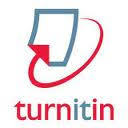Gambaran Toxic Masculinity dan Kecenderungan Body Dysmorphic Disorder (BDD) pada Remaja Laki-Laki
DOI:
https://doi.org/10.25170/manasa.v14i1.6501Keywords:
toxic masculinity, tendency of body dysmorphic disorder (BDD),, adolescent boysAbstract
Masculinity is often associated with social expectations requiring men to be resilient, strong, and determined. However, these expectations can create social pressures leading to toxic masculinity, which increases the risk of mental health issues such as a tendency toward Body Dysmorphic Disorder (BDD). BDD is characterized by an exaggerated perception of minor or non-existent flaws in one’s appearance. This study aims to explore toxic masculinity and the tendency toward BDD in male adolescents. The research employs a qualitative descriptive approach using structured interviews conducted on high school boys aged 17–18. Three participants were selected based on CMNI-46 screening scores above 119 to ensure they represent the targeted masculinity characteristics. Data were analyzed using thematic analysis, maintaining integrity through triangulation. The findings reveal toxic masculinity and BDD tendencies in male adolescents, shaped by traditional masculinity expectations emphasizing dominance, emotional suppression, and avoidance of vulnerability. Pressure to meet standards, such as achieving an ideal physical image, triggers compulsive behaviors, anxiety, and social isolation, negatively impacting mental health. Factors such as family, culture, social media, religion, economy, and birth order influence masculinity perceptions. The study underscores the need for education and further research to create safe spaces for boys to express emotions without stigma and provide adequate psychological support.
References
American Psychiatric Association. (2013). Diagnostic and statistical manual of mental disorder edition “DSM-5”. Washington DC: American Psychiatric Publishing. Washington DC.
Connell, R. W., & Messerschmidt, J. W. (2005). Hegemonic masculinity: rethinking the concept. Gender and Society, 19(6), 829–859. https://doi.org/10.1177/0891243205278639
De Boise, S. (2019). Is masculinity toxic?. Norma, 14(3), 147-151. https://doi.org/10.1080/18902138.2019.1654742
Hanifia, E. (2021). Pengaruh body image terhadap kecenderungan body dysmorphic disorder pada wanita overweight di Desa Betiting (Doctoral dissertation). Universitas Islam Negeri Maulana Malik Ibrahim). https://etheses.uin-malang.ac.id/33733/
Husodo, E. & Sethio, A. C. (2021). Destruction of Indonesian men’s masculinity as a result of perfect male-lead portrayal in Korean dramas. Book Chapter Pedagogical Innovations in Education, 7-13. https://digitallibrary.ump.ac.id/1073/1/BC_002%20Evita%20Husodo%2C%20Anastasya%20Chandraputri%20Sethio%20%287-13%29.pdf
Karimah, A., Sutata, M. A. P., & Hasanati, N. (2024). Factors affecting body image in adulthood: A systematic review. Research Psychologie, Orientation et Conseil, vol. 1, no. 2. https://doi.org/10.70177/rpoc.v1i2.965
Murtaqiyah, A. (2010). Faktor-faktor yang mempengaruhi body dysmorphic disorder (BDD) pada siswa remaja: Penelitian terhadap siswa kelas X dan XI SMA Pasundan 3 Bandung tahun ajaran 2009/2010 (Doctoral dissertation). Universitas Pendidikan Indonesia.
Rahma, S. (2022). Hubungan self-esteem dengan kecenderungan body dysmorphic disorder pada mahasiswi Universitas Islam Riau (Disertasi). Universitas Islam Riau.
Safitri, A. O., Novrianto, R., & Marettih, A. K. E. (2020). Body dissatisfaction dan perilaku diet pada remaja perempuan. Psibernetika, 12(2), 100–105. http://dx.doi.org/10.30813/psibernetika.v12i2.1673
Santrock, J. W. (2019). Life-span development 17th edition. New York: McGrawHill
Waruwu, A. K., & Wahyuni, D. (2023). Toxic masculinity represented in Collen Hoover’s It Ends With Us (2016). English Language and Literature, 12(4), 690-699. https://doi.org/10.24036/ell.v12i4.125747.
Wikström, Malin Christina. (2019). Gendered bodies and power dynamics: The relation between toxic masculinity and sexual harassment. Granite Journal, 3(2), 28 – 33. https://www.abdn.ac.uk/media/site/pgrc/documents/Granite_Gendered_Bodies_and_Power_Dynamics_The_Relation_between_Toxic_Masculinity_and_Sexual_Harassment,_Wikstrom,_pp_28-33.pdf
Zaelan, R. (2022). Perancangan informasi toxic masculinity melalui media buku ilustrasi (Disertasi). Universitas Komputer Indonesia.
Downloads
Published
Issue
Section
License
Copyright (c) 2025 MANASA

This work is licensed under a Creative Commons Attribution-NonCommercial-ShareAlike 4.0 International License.









.png)
.png)

